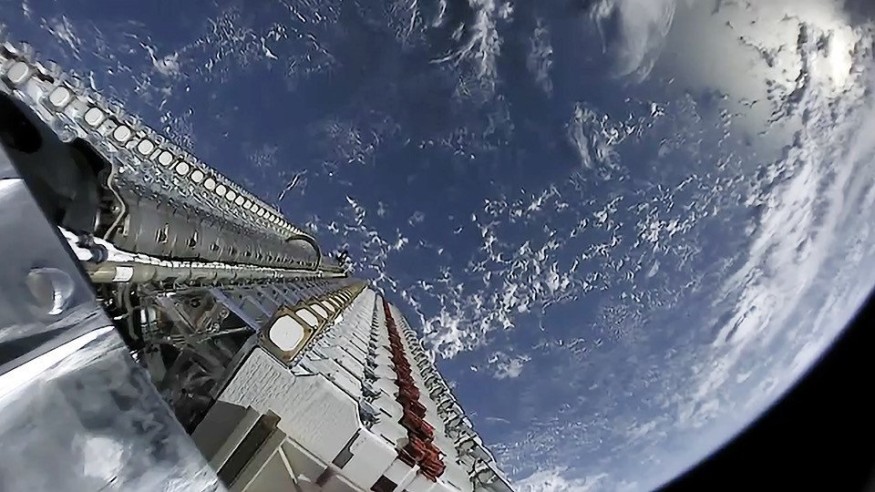SpaceX has released another batch of Starlink satellites, keeping up the steady speed of launches for the low-earth orbit broadband constellation it is building. Since March 4, a total of 300 Starlink satellites have been deployed, 60 on each of five flights between then and now.

Space.com said the veteran Falcon 9 rocket launched from Space Launch Complex 40 at Cape Canaveral Space Force Station in Florida at 12:34 p.m. EDT (1634 GMT), marking the company's tenth launch of the year.
"Falcon 9 has successfully lifted off from Cape Canaveral Space Force Station carrying our stack of Starlink satellites to orbit," Jessie Anderson, a SpaceX manufacturing engineer, said during a live webcast of the launch.
The rocket's first stage returned to Earth nine minutes later, docking on SpaceX's drone ship "Of Course I Still Love You" for its seventh successful landing.
The most recent mission was on March 24, with previous flights on March 14, March 11, and March 4. This is on purpose, as SpaceX has stated that it plans to launch 1,500 Starlink satellites this calendar year.
SpaceX also flew four other Starlink flights before that busy month, including a joint trip on its first dedicated rideshare flight, which also transported satellites for other clients.
How Many Starlinks Did Launch All in All?
TechCrunch said SpaceX had deployed a total of 1,443 satellites for its Starlink constellation. However, this does not reflect the total number of satellites in space since some satellites were deorbited as intended. The constellation's final proposed scale is estimated to include up to 42,000 spacecraft based on the latest FCC frequency spectrum filings.
SpaceX and NASA jointly made a new deal outlining how the two agencies would prevent near encounters or collisions with their spacecraft. NASA has procedures in place that all rockets must adhere to in order to prevent accidents like this. Still, the size and duration of SpaceX's Starlink missions necessitated a separate, more comprehensive arrangement.
The Falcon 9 booster used in this launch landed for the seventh time, bringing the total number of Falcon 9 booster landings to seven. The booster landed on SpaceX's floating landing pad in the Atlantic Ocean as planned and refurbished for future use.
SpaceX will also try to reclaim the fairing halves at sea, which are the two cargo shielding shields that encase the satellites during launch. The organization recently decommissioned two ships used to capture these when they fall through the waters, delayed by parachutes. However, it is still trying to recover them from the ocean following splashdown for re-use.
Constellation Expansion
Starlink is currently in beta testing, Space.com said. Customers in the United States, Canada, the United Kingdom, Germany, and New Zealand are eligible to use the service. SpaceX is accepting preorders in anticipation of the launch of its full commercial services later this year. Through signing up on the company's website, potential customers will begin reserving the service now with a $99 deposit.
SpaceX isn't the only organization that wants to bind the world. OneWeb, Amazon, and Telstar are also working on their own constellations. OneWeb, on the other hand, is the only other provider with real satellites in orbit right now.
Last month, the London-based corporation launched 36 of its satellites on a Russian Soyuz rocket as part of its strategy to construct a constellation of 650 satellites. Of the 19 missions scheduled, OneWeb has launched five so far.
RELATED ARTICLE : SpaceX Falcon 9 Rocket Launch: Mission Preparations, How to Watch, and What You Need to Know
Check out more news and information on SpaceX on Science Times.












